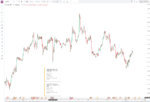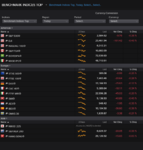I was right in my judgement of it being dovish. Can't help but feel that I could have made more,
It is a good question. Could we have done better? I normally conduct a post review of this type of event to make some determination. I will share my post trade analysis since our trading approach and methodology is very similar.
I will first set out the research background as the determination is predicated upon certain assumptions going in.
The majority analyst consensus is there will be a rate hike coming off the BOE. The market in effect had priced in a 90 % probability as we got near to the event.
We also know that there are two key data points in the news release that are critical to how the market will react. The easier piece is the vote split but the forward guidance would be more problematic in terms of timeliness and language construct. This means there will be two trade decisions, one coming off the vote split and the other following shortly thereafter the forward guidance.
Since the market is expecting a rate hike, we had formed a view that there will be a price pop and an opportunity to sell into that fact. The forward guidance was more of an unknown in terms of dovish or hawkish nature.
If our view plays out in line with market expectation, the question then becomes how do we execute the trade strategy. I would first outline what we are faced with. Market events like this are primarily institutional plays. That means we are competing based on informational flow. The institutions have real time terminals like Bloombergs and Elkons. They have analysts who would call out their interpretation of the forward guidance to the traders as it comes through the wire. We are a one man band with delayed feed and acting as analyst and then trader. As I witnessed, that pop and drop of more than 100 pips was probably in less than 10 secs. No matter how nimble we are, we will always be behind the information cycle and hence price moves. Although we can take a small slice of that initial move, any bigger slice will require a different trading approach.
What do I mean? Basically we have concluded going in is to take a "sell the fact" approach. We already have a trade strategy and that leaves trade execution. In other words, plan the trade and trade the plan if we have conviction. It means setting a sell limit order at the recent price resistance to trigger us in during the price pop. It might be possible that it does not reach the price point that we set. Additionally there is the risk that the forward guidance is hawkish which would mean prices will just blow through resistance. We know that is very unlikely because there are no economic data pointing to such a scenario as a reality. In other words, the odds are not there.
Once we have done the analysis and formulated a plan, it can be quite frustrating to watch on the sidelines. The choice is whether to be reactive or proactive. That is a trade decision to consider if you want to do better.
Alternatively is to trade the second leg of the move which did developed during the US session.



